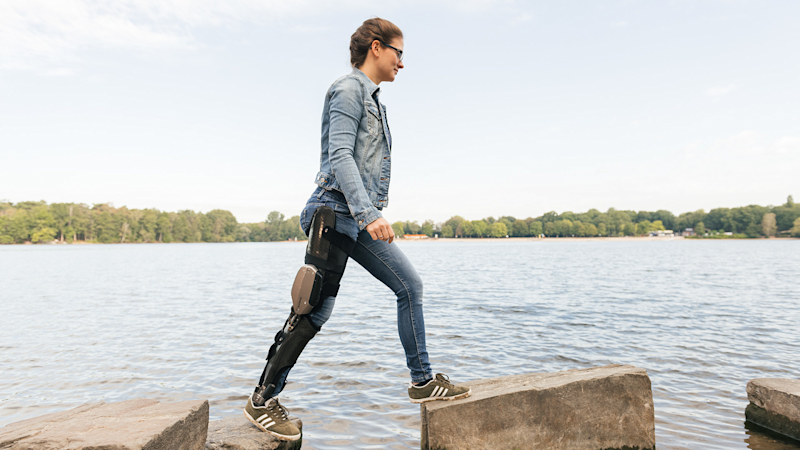
Research partnership for walking after paraplegia
Ottobock & Robot Rehabilitation Center in Japan
The new research partnership combines orthoses and robotics in a rehabilitation programme for paraplegics.
Bionic limbs and orthoses already help people with disabilities lead a more mobile life. Now scientists are building on successes during rehabilitation in the field of robotics: In the same year as the 2021 Paralympic Games in Japan, Ottobock is establishing a lasting affiliation with the Robot Rehabilitation Center in Kobe. The partners are working to combine the HAL robotic suit with Ottobock’s C-Brace. The computer-controlled leg orthosis keeps many patients out of a wheelchair after an incomplete spinal cord injury. Dr Takaaki Chin, Director of the Robot Rehabilitation Center: “My goal for this combined therapy is to scientifically prove that both spinal cord injury patients with incomplete paralysis and spinal cord injury patients after regenerative medicine can walk independently in their community again.” Ottobock is providing the C-Brace orthoses in the research partnership.
HAL robotic suit being combined with Ottobock’s C-Brace
Yoshiyuki Sankai, a Japanese robotics professor and founder of Cyberdyne, developed HAL (Hybrid Assistive Limb) in the 1990s. Today, the robotic exoskeleton assists people with paralysis during rehabilitation in Japan. It captures muscle signals with sensors on the skin, a microprocessor converts them into movement commands and the joint moves. One disadvantage is that while HAL is used during rehabilitation over the course of several months, it is not suitable for everyday use due to its size. Without the suit, that which has been accomplished is gradually lost over time. This is where the C-Brace comes in. Dr Andreas Hahn, Head of Clinical Research at Ottobock: “Combining robotic suits like HAL for initial treatment and ongoing rehabilitation with the C-Brace represents an innovative approach for severely affected patients.” The research partnership came about when Dr Hahn met the Congress President, Dr Takaaki Chin, during the World Congress of the International Society for Prosthetics and Orthotics (ISPO). Dr Hahn says: “The possibilities he has created in his rehabilitation centre are just as fascinating as his openness to interdisciplinary cooperation in order to benefit patients.” Dr Chin also uses Ottobock's Kenevo knee prosthesis in early rehabilitation.
Cooperation with Japan – melting pot of modern robotics
Demographic change is one thing Japan and Germany have in common: By 2060, 40 per cent of Japan’s population is expected to be over 65 years old; in Germany, it is every third person. The demand for orthoses, exoskeletons and prostheses is growing along with this shift – as is the need for new technologies that keep people active as long as possible. The cooperation between Japan and Germany supports clinical research on both sides, says Ottobock’s Chief Technology Officer (CTO), Dr Andreas Goppelt: “The C-Brace is a revolutionary paralysis orthosis, and I am very pleased that it will also help patients regain their mobility in Japan. Japan is the world's second-largest medical technology market, not least because of its demographics. Our mission is to improve the quality of life of the users. And we are particularly excited to be partnering with the prestigious Robot Rehabilitation Center in Kobe.” Japan is a global epicentre of robotics in both medical technology and industry. It is home to the largest manufacturers including Fanuc, Yaskawa and Omron. Robots are found in airport terminals, supermarkets and care settings. “At the same time, the search for the ideal way to use them safely and efficiently is still ongoing,” says Senior Adviser Yuichi Yano of Ottobock Tokyo. Dr Chin’s rehabilitation centre is working on that. “Fifteen years ago, when nobody was looking at robotics in the medical field yet, I was convinced that this could be a powerful rehabilitation strategy,” he says. “That’s why I decided to found the first Robot Rehabilitation Center in Japan. My goal is to help people with disabilities via robotic rehabilitation.”
Downloads
This video shows a patient with the HAL
Dr Chin (right), the founder of the Robot Rehabilitation Center, is working on a research project combining Ottobock's C-Brace with the HAL
2 results out of 2
